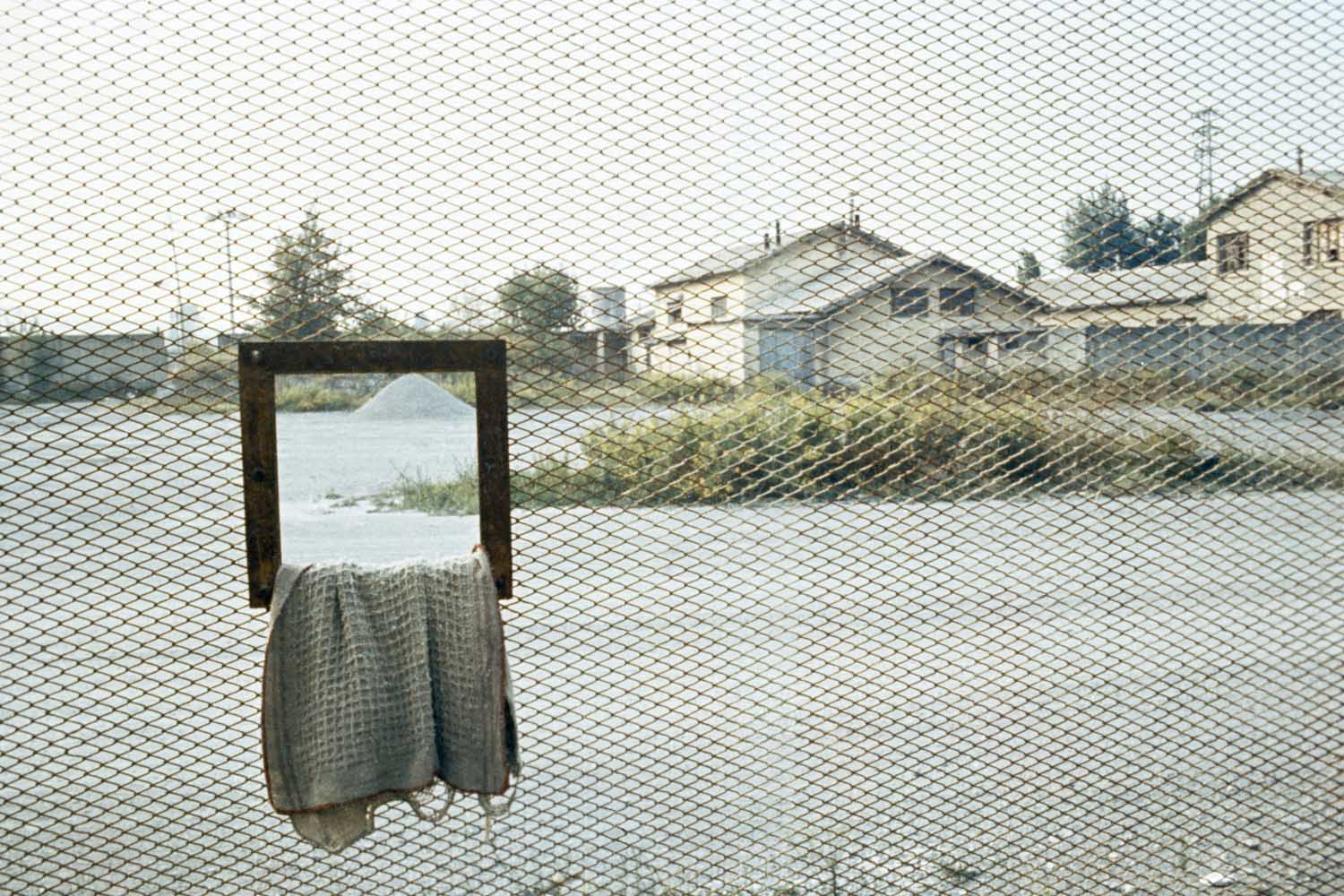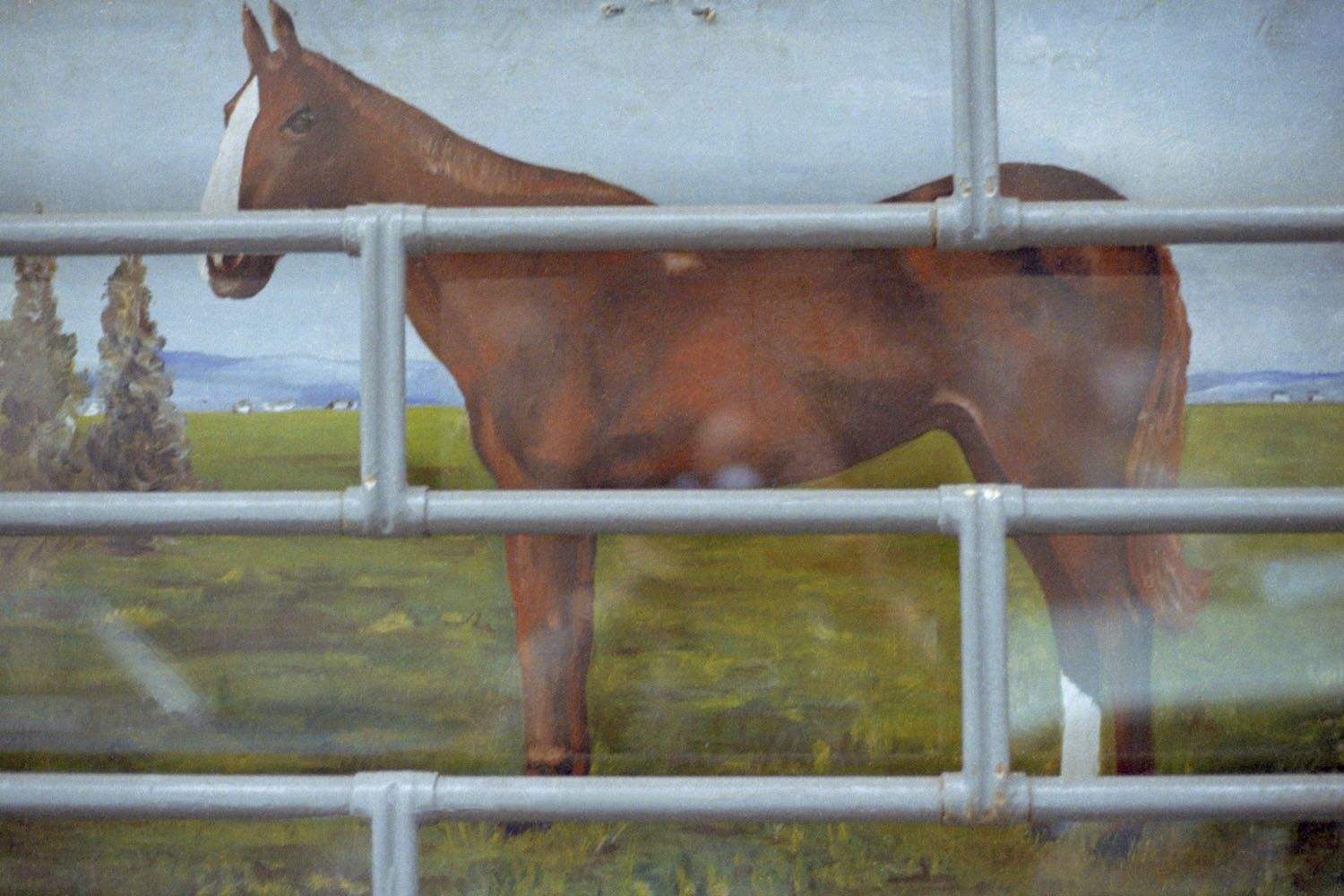
As an avid photobook enthusiast I have gone to great lengths to see books that are far out of my reach economically. I have spent countless hours at photobook auction previews just to carefully flip the pages of rarities that will be sold for thousands of dollars. I have no intent to bid or buy, or to check the condition which is the main reason for attending previews. My reasoning is just to experience and gauge my own level of interest (albeit quickly) concerning what are the important titles of photobook history. When so much material is out of reach, one depends almost entirely on the scholars and historians as a guide, but in the end it is all subjective. This is why I am so happy that MACK has succeeded in creating a facsimile edition of the Italian photographer Luigi Ghirri’s 1978 book Kodachrome. On the anniversary of Ghirri’s death, I finally have the chance after so many years to have the opinion that it’s, well, not my cup of tea.
Luigi Ghirri came to photography in 1970 with an interest in the conceptual side drawn from his training. One pursuit was the paradox of photography itself and uniting the real and the artificial, visible and invisible in the single image. Photographs in general, Ghirri believed, whether “art” or advertising, create a vast labyrinth of images to navigate daily through which it is difficult to decoding our true surroundings.
‘The daily encounter with reality, the fictions, the surrogates, the ambiguous, poetic or alienating aspects, all seem to preclude any way out of the labyrinth, the walls of which are ever more illusory… to the point at which we might merge with them… The meaning that I am trying to render through my work is a verification of how it is still possible to desire and face a path of knowledge, to be able finally to distinguish the precise identity of man, things, life, from the image of man, things, and life.’
That, for me, is interesting to ponder philosophically but are the works in Kodachrome, in the words of essayist Francesco Zanot, “powerful devices for the re-education of the gaze?” This seems a modest collection through which many things can be projected, but without the textual introductions of the edition laying out the intent, or at least providing guidelines for reading, I don’t see the photographs alone enabling the task. A small handful of the 92 images compel me to try — but most have me grappling just to keep my attention.
The qualities of the photography in Kodachrome call into question for me why this book seems so universally revered among the writers of photobook history. The major developments in color photography in general seem so often boiled down to the Americans “William Eggleston and Stephen Shore,” whereas post-war European color photography books seem to get scant attention — even though one of the first true pioneers of color work was the Danish photographer Keld Helmer-Petersen with his 1948 book 122 Colour Photographs. Then the historical timeline of European photobooks continues along mostly in black and white until 1978 and the publication of Kodachrome? Are there no other landmark books between 1948 and 1978 that could also act as balance to the historical dominance of Eggleston’s color?
Being that I approach most photography, my own and that of others, knowingly comfortable to be trapped within the labyrinth of illusion, aesthetics, style, and photography as the language of metaphor — Kodachrome is a deck stacked against me. It stands as the antithesis to my own practice where the visual component compels you to explore the relationship to the image before you.
Luigi Ghirri’s Kodachrome was reissued by MACK in November, 2012. Twenty-five vintage color prints from the series were recently on view at Matthew Marks Gallery in New York.
Jeffrey Ladd is a photographer, writer, editor and founder of Errata Editions.










More Must-Reads from TIME
- Donald Trump Is TIME's 2024 Person of the Year
- Why We Chose Trump as Person of the Year
- Is Intermittent Fasting Good or Bad for You?
- The 100 Must-Read Books of 2024
- The 20 Best Christmas TV Episodes
- Column: If Optimism Feels Ridiculous Now, Try Hope
- The Future of Climate Action Is Trade Policy
- Merle Bombardieri Is Helping People Make the Baby Decision
Contact us at letters@time.com